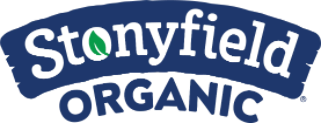Changing Your Community: How to Become a Local Advocate for Non-Toxic Fields
How do you persuade your community to change from using toxic chemicals to a field management program that is healthier and safer? Here are four easy steps to get started.
Step #1 – Find out what your community policy is on spraying chemicals in your public playing areas. Here are some things you can do:
- Call your local Public Works or Parks and Recreation Department and ask!
- Search your local .gov website for the words “pesticides” or “herbicides” to find recent articles, meeting notes, or other documents that could help you uncover the policies and usage.
- Every town and community is a little bit different. Use what you know about your town to get to the right person with the right information.
Tip: You can also call your Homeowners Association, School District, Apartment Management Company, and Corporate Office to find out about pesticide use in these common areas.
Step #2 – Look for groups or organizations in your community already working to create change. Check out these recommendations:
- The Non-Toxic Neighborhoods website is filled with cities already making progress. Check to see if your town, city, or state is listed. The links on their site will bring you to your local community page if one exists.
- Beyond Pesticides has a listing of state, national, and international organizations that are working to make change. Take a look here to see if there’s a way you can get involved and support their efforts.
- Search Facebook for groups that have already formed and organized. Search terms should include your city name and words like “organic parks,” “pesticide free parks,” or “clean playing fields.” If you find a group, reach out and ask them if you can join.
- This map lists towns with organic policies and/or making progress towards organic guidelines. Take a look to see if your town is listed and get a quick update on the strides being made.
Step #3 – Form a Group of concerned community members. Talk to your neighbors, friends, and family, and form a committee to meet regularly and take on the challenge to create change. Here are some ways to get started:
- Identify the key decision makers in your community. Find the group of people who make the decisions to use chemicals and who oversees the maintenance of the parks and fields.
- Collect studies, data, and personal stories that bring the issue to life for your town.
- Engage local experts who will support you such as organic lawn care experts, sustainability leaders, and passionate parks and recreation employees. Even community members from other towns who have successfully created change.
- Identify what specific actions are needed to change the policies in your community. This could range from starting a petition, attending town meetings to bring attention to the issue, making a request for change, or sending a demand letter.
- Create a Facebook group to get other local community members involved. This is also a good way to communicate your needs and progress.
Step #4 – Learn from communities who have already experienced success. The following tool kits are jam-packed with information about how to get started, useful data, and examples of making it happen:
- Non-Toxic Neighborhoods Toolkit
- Beyond Pesticides “Tools for Change”
- Midwest Municipal Pesticide Reduction Toolkit
- Local advocacy tools developed by the Union of Concerned Scientists
Examples of communities with successful policies are South Portland, Maine, with Grow Healthy South Portland and Takoma Park, Maryland, with the Maryland Safe Grow Act.

